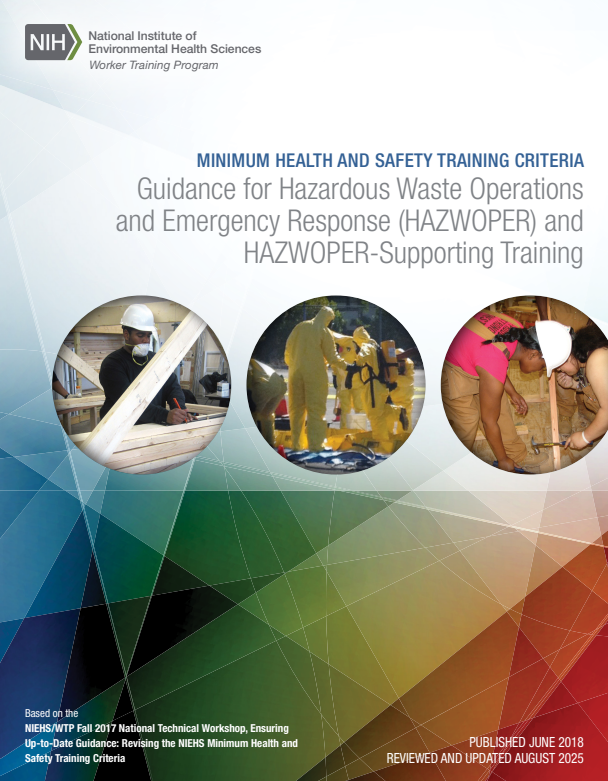Worker Training Program
Program Authorization
The NIEHS Worker Training Program (WTP) was established under the Superfund Amendments and Reauthorization Act of 1986 (SARA), Section 126(g), which authorized an assistance program for training and education of workers engaged in activities related to hazardous materials and waste, such as generation, removal, containment, transportation, and emergency response. Congress assigned responsibility for administering this program to the NIEHS.
Interagency Agreement with the U.S. Department of Energy
In 1992, NIEHS established an interagency agreement with the U.S. Department of Energy (DOE) Office of Environmental Management
to prepare and equip workers with proper training to address hazards within and around U.S. DOE sites, particularly those related to
the nation’s Cold War environmental legacy. This agreement was authorized by Section 3131 of the National Defense Authorization Act
of 1992.
For 30 years, WTP has administered grants through the NIEHS/DOE Nuclear Worker Training Program which focuses on delivering training in environmental restoration, waste treatment, and emergency response activities at DOE sites across the country.
Minimum Criteria

There are requirements that WTP-funded training programs must satisfy to meet standards specified in OSHA rules and other regulations for hazardous waste workers and emergency responders. Training programs are also required to meet the NIEHS Minimum Health and Safety Training Criteria: Guidance for HAZWOPER and HAZWOPER-Supporting Training (Minimum Criteria). This guidance emphasizes the principles of adult education, establishes minimum criteria for designing training programs, establishes quality control requirements for training programs, and provides generic guidelines for training curriculum.
Skills-Based Learning
Skills-based learning and adult education are prominent focus areas in the Minimum Criteria. WTP emphasizes hands-on and collaborative activities in training programs to tap the experience of the learner. Effective training provides the learner (worker) with relevant health and safety information, problem-solving skills, and the confidence needed to apply what they have learned. The long-term goal of training is to encourage workers to take an active role in improving health and safety conditions on the job, and to promote collaborative employer-employee relationships in creating safe workplaces.


